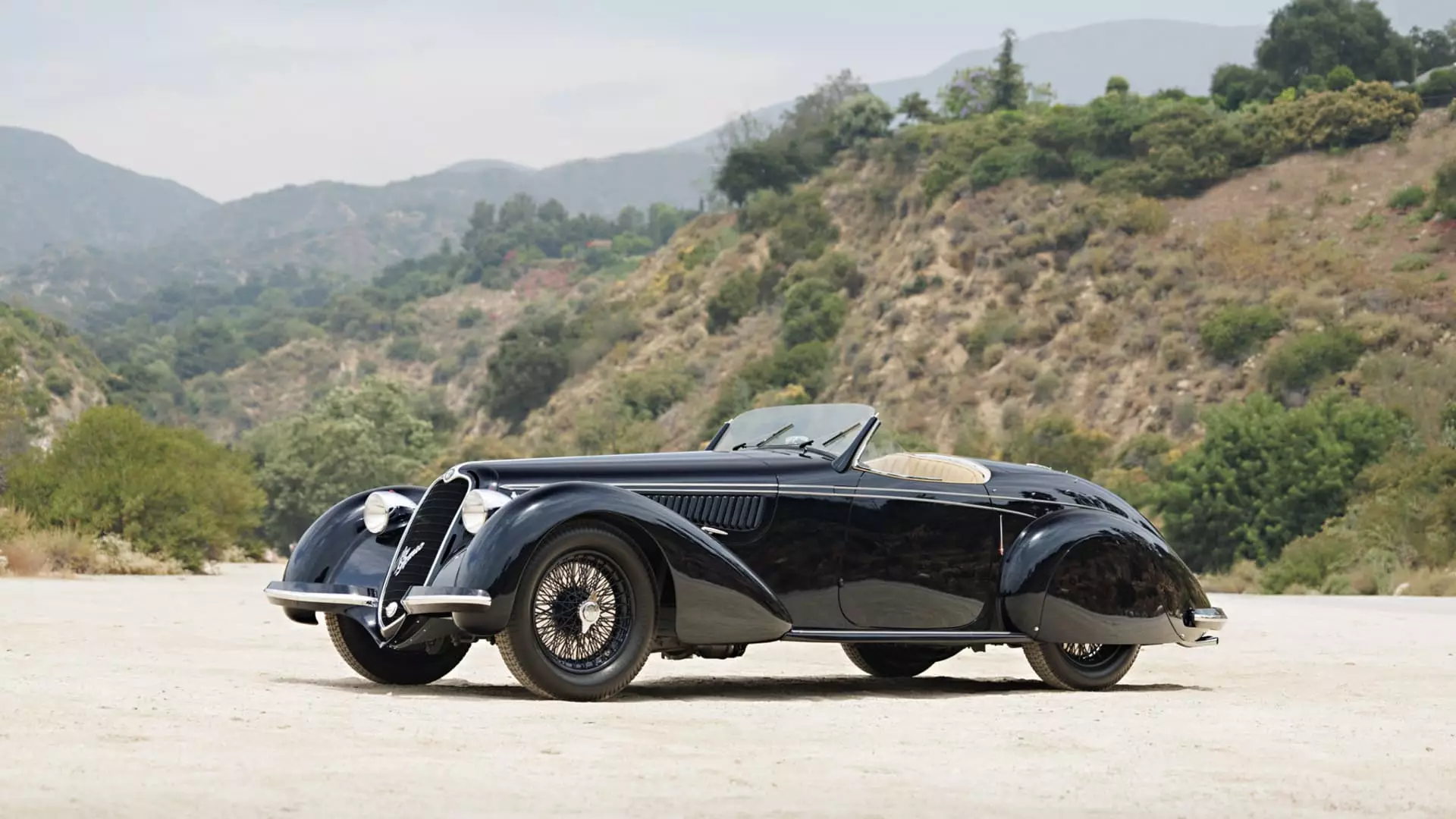The annual Monterey Car Week has historically served as a significant benchmark for the classic car auction market, showcasing a plethora of vintage vehicles and enticing high-net-worth collectors. However, recent data from this year’s sales indicates an intriguing shift. The total auction revenue reached $391.6 million, a slight decline from the previous year’s $403 million, representing a 3% drop. This downturn comes on the heels of an already challenging 14% decrease reported last year, causing many industry experts to scrutinize the underlying trends affecting collector preferences and market viability.
The total number of cars available for bidders during the auction totaled 1,143, yet only 821 transactions occurred, leading to a sell-through rate of 72%. While this figure demonstrates that a significant portion of vehicles did sell, it also points to a saturation within the auction inventories that may be suppressing prices. The average sale price of $476,965 also reflects a nominal decrease from the previous year’s $477,866. This cautious enthusiasm among bidders starkly contrasts the dizzying highs seen in earlier auctions, revealing a crucial turning point for the market.
One of the most compelling factors contributing to this shift is the demographic evolution within the collector space. Traditionally, classic car collectors primarily hailed from the Baby Boomer generation, favoring pristine examples from the 1950s and 1960s. As this demographic begins to offload their collections, a new wave of collectors—predominantly Gen Xers and millennials—are emerging, whose preferences lean toward models from the 1980s, 1990s, and early 2000s. Notably, contemporary vehicles are seen as more relatable and emblematic of the buyers’ formative years.
Unsurprisingly, this generational shift is inducing a significant realignment within the auction scene. Classic pre-1981 vehicles priced above $1 million suffered a disconcerting sell-through rate of only 52%, in stark contrast to a robust 73% sell-through rate for newer models (under four years old). This divergence not only highlights generational preferences but also exposes a potential misalignment of inventory with buyer sentiments. As younger buyers take precedence in the market, older cars—once the titans of auction blocks—are increasingly left to languish.
Industry experts have been vocal about the perils of market saturation, which turned many auction houses into hosting platforms crowded with similar vehicles. Simon Kidston, a seasoned collector advisor, aptly captures the prevailing sentiment of confusion and missed opportunities among consignors. Each auction echoed a scenario where similar models scrambled for a limited pool of buyers, inevitably leading to diminished auction prices. The influx of old models, many of which had seen previous auction circuits or languished in dealership displays, further complicates their desirability.
Competition for collector attention has tightened, demanding distinctiveness and rarity for successful sales. Pieces once celebrated for their classic appeal now face the reality of being perceived as commonplace. In the face of a crowded field, the overall allure of these brands has waned, necessitating a reevaluation of strategies for both sellers and auction houses alike.
Another factor exerting pressure on the classic car market is the rising interest rates which influence both buyer behavior and investment strategies. Enthusiasts who once leveraged favorable financing conditions to acquire dream cars are now encountering steeper economic calculations. High-net-worth individuals are beginning to weigh the merits of investing in classic vehicles against alternative avenues where returns could range between 5% and 10%. The opportunity cost of investing in classic cars, which are often viewed as dual-purpose assets—both as collectibles and investments—has become a significant consideration for many collectors.
As these market dynamics unfold, analysts predict that prices for classic models may continue to experience a slow deterioration, exacerbated by the incoming wave of younger buyers keen on investment potential. The shifting landscape of investment vehicles may dictate not only which cars gain traction, but also shape the future of the classic car market itself.
The results from Monterey Car Week underscore a critical moment in the classic car auction landscape. With evolving tastes, generational shifts in the collector landscape, and financial headwinds exerting additional pressures, the classic car market is in a period of transition. While rare masterpieces can still command impressive prices, the broader implications suggest that classic car enthusiasts must adapt to a changing environment that is increasingly accommodating a new breed of automobile aficionados. The future of classic car auctions is being reimagined—will it align with historical trends, or venture forth into a radically new paradigm? Only time will reveal the full story.


Leave a Reply